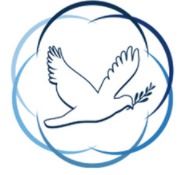The State of Hate Index II
Location
Littlefoot B Room 124B
Start Date
22-4-2023 10:30 AM
End Date
22-4-2023 11:45 AM
Publication Date
2023
Disciplines
Arts and Humanities | Law | Social and Behavioral Sciences
Description
This paper presents the second iteration of the State of Hate Index (SoHI), an analytical assessment of the potential for hate-based violence in a given region. The SoHI II project maps out when hate has occurred and where it might be more likely in the United States. The January 6th insurrection and the attack on Nancy Pelosi’s husband are two examples of how political violence is increasing. The findings examine how hate manifests in the fifty states of the U.S. from 2021-2022, looking at multiple indicators for when hate might become more salient. These indicators include number/prevalence of hate groups, white supremacy incidents and state policies and laws regarding gender and sexual orientation. SoHI II adds two new variables—proposed and new, state abortion legislation, and police killings of blacks. SoHI II parallels other political assessment projects such as Freedom House’s rating of political freedom, Waller’s Genocide Risk Assessment, and the Minorities at Risk project. The overriding argument of the project is that if you increase the level of hate in a region, you increase the likelihood of violence. Or, the greater the salience of hate, then the greater the number of hate “triggers”, (Stern 2004); and, the greater the likelihood of activation of those triggers. Certainly we have seen this happen nationally during Trump’s administration (see Edwards and Rushin 2018 and Feinberg, Branton & Martinez-Ebers 2019), but it was also very apparent after 9-11 and even earlier, after the Oklahoma City bombing. SoHI II will hopefully inform policy makers and politicians, demonstrating that the potential for political violence is visible before bodies and properties are attacked.
Description Format
html
Recommended Citation
Tynes, Robert, "The State of Hate Index II" (2023). International Conference on Hate Studies. 62.
https://repository.gonzaga.edu/icohs/2023/seventh/62
Full Text of Presentation
wf_no
Media Format
flash_audio
Session Title
Review of U.S. Congressional Politics, Hate Crimes, Potential for Violence, and Sex-Gender Differences Research
Type
Panel
The State of Hate Index II
Littlefoot B Room 124B
This paper presents the second iteration of the State of Hate Index (SoHI), an analytical assessment of the potential for hate-based violence in a given region. The SoHI II project maps out when hate has occurred and where it might be more likely in the United States. The January 6th insurrection and the attack on Nancy Pelosi’s husband are two examples of how political violence is increasing. The findings examine how hate manifests in the fifty states of the U.S. from 2021-2022, looking at multiple indicators for when hate might become more salient. These indicators include number/prevalence of hate groups, white supremacy incidents and state policies and laws regarding gender and sexual orientation. SoHI II adds two new variables—proposed and new, state abortion legislation, and police killings of blacks. SoHI II parallels other political assessment projects such as Freedom House’s rating of political freedom, Waller’s Genocide Risk Assessment, and the Minorities at Risk project. The overriding argument of the project is that if you increase the level of hate in a region, you increase the likelihood of violence. Or, the greater the salience of hate, then the greater the number of hate “triggers”, (Stern 2004); and, the greater the likelihood of activation of those triggers. Certainly we have seen this happen nationally during Trump’s administration (see Edwards and Rushin 2018 and Feinberg, Branton & Martinez-Ebers 2019), but it was also very apparent after 9-11 and even earlier, after the Oklahoma City bombing. SoHI II will hopefully inform policy makers and politicians, demonstrating that the potential for political violence is visible before bodies and properties are attacked.


